Florida Tea Party Group Clamoring for More Rooftop Solar


Our journey toward a sustainable future has been and will undoubtedly continue to be an uneven ride, marked by setbacks one day and breakthroughs the next. You can't take much for granted on this landscape, either. It used to be that conservatives could be counted on to take the side of the established fossil fuel industries.
Look at North Carolina, for example. Down there you have utility giant Duke Energy trying to pass a bill that would allow fees to be charged to utility customers who generate their own electricity using rooftop solar and sell it back to the utility through net metering. Appalachian Power in Virginia has asked for similar fees. Public Service Co. of New Mexico has a similar proposal in the works. Most experts agree that these actions would have a discouraging effect on people who were considering the possibility of adding solar to their homes.
You might have thought it was safe to take that trend for granted as something that red states were doing. But a Tea Party group in Florida called Conservatives for Energy Freedom has taken the opposite tack, asking for a measure that would “encourage and promote local small-scale, solar-generated electricity production and to enhance the availability of solar power to customers.”
While the current law only allows individuals to buy solar-generated electricity from utilities, this proposed new law would allow individuals to buy from other individuals. This is important in arrangements where a group of people could go in together on a solar installation, or in many cases where a person’s solar array is producing more power than they need at any given time. The ability to sell that excess power can make a significant difference to the financial attractiveness of the investment. This measure would allow businesses and individuals to produce up to 2 megawatts of solar power and sell it to others.
The group, headed by activist Tory Perfetti, will begin collecting signatures for a ballot measure this week. Close to 700,000 signatures are required to get on the ballot. Once on the ballot, the initiative must get 60 percent of the votes to pass. Debbie Dooley, the founder of the conservative group, says she’s not surprised at the high level of support the idea has been receiving.
“Free market and the freedom to choose — those are core conservative principles,” she told ThinkProgress. “Unless you cherry-pick your principles, if you’re a true conservative, this is something that resonates with you. I think the residents are fed up with the government telling them who to purchase their power from.”
As reasons to pursue sustainable practices like rooftop solar continue to pile up, it’s inevitable that some of these motives will appeal more to conservatives, while others appeal to liberals. The bottom line comes down to one thing: broad appeal.
A poll taken last year by a market research firm found that 77 percent of Floridians support net metering, and 71 percent oppose the imposition of a new fee, similar to the ones other red states have implemented. These results were remarkably consistent across political lines.
Florida’s climate is well-suited for solar power, though the state’s political climate has generally not been until now. The state has no renewable portfolio standard, though solar installations became exempt from personal property taxes in 2013.
This story tells us the path forward depends on finding common ground with those who might hold different political philosophies, but who have their own reasons for supporting actions that will lead toward a flourishing future for all.
That common ground appears to have already been found in North Carolina, which has recently undergone a solar boom.
At root, I think the primary economic difference between conservatives and liberals comes down to the interaction between business and government. Conservatives tend to oppose regulation, while liberals are concerned about the unchecked excess of businesses. As businesses, and perhaps more importantly their customers, become increasingly aware of the issues that challenge us as a society going forward, the need for regulation will become reduced. That’s because businesses will always need to be responsive to the concerns of those they depend on to buy their products.
Image credit: Solar Energy World LLC: Flickr Creative Commons
RP Siegel, PE, is an author, inventor and consultant. He has written for numerous publications ranging from Huffington Post to Mechanical Engineering. He and Roger Saillant co-wrote the successful eco-thriller Vapor Trails. RP, who is a regular contributor to Triple Pundit and Justmeans, sees it as his mission to help articulate and clarify the problems and challenges confronting our planet at this time, as well as the steadily emerging list of proposed solutions. His uniquely combined engineering and humanities background help to bring both global perspective and analytical detail to bear on the questions at hand.
Follow RP Siegel on Twitter.
Bolstering Regional Management for Sustainable Tuna Fisheries

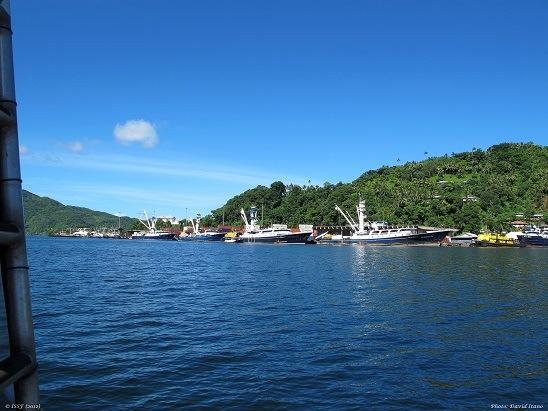
By Susan Jackson
The overfishing of the bigeye tuna stock in the central and western Pacific Ocean was one of the most talked about fisheries stories of 2014. Maybe that’s why, at the end of last year, almost every stakeholder in the industry and conservation community expressed stern criticism for the lack of effective measures to end overfishing in the western and central Pacific, where the species’ decline is most pronounced.
When it comes to tunas, there are five regional fisheries management organizations (RFMOs) that cover all oceans. The members of these organizations – which include all of the major fishing nations and coastal states – have the mandate to collectively adopt conservation and management measures for those fisheries. Responsibilities vary depending on the region, but a tuna RFMO’s purview can include monitoring how much fish is harvested per year; the gear types that are allowed; when fishing in certain areas or times is closed; the number of vessels that can be active in a fishery; requiring the use of human observers or satellite tracking systems to monitor fishing activities on the water; mandating the use of technical solutions to mitigate the catch of sensitive marine species; and much more. These RFMOs all also have systems for assessing compliance with their regulations by their member states. Most importantly, over decades these treaty-based organizations have established a legal framework within which members adopt binding measures that carry the force of law.
One of these five organizations, the Western and Central Pacific Fisheries Commission (WCPFC) – whose membership includes nations from the EU to China, Japan to the U.S., and New Zealand to the Solomon Islands – recently wrapped up a disappointing year-end session. Little was accomplished for tuna sustainability despite calls for several necessary and significant policy changes from a diverse group of concerned parties.
Like any organization composed of many governments, bureaucratic slog and political posturing can too frequently reign over decisive action. With the example from the recent WCPFC meeting, it's perhaps understandable that the calls for an entirely new, from-the-ground-up international governance system continue and may even be gaining some momentum. But it is important to think carefully about disregarding the existing legal framework of tuna RFMOs, which already have the mandate, membership, global coverage and experience working in each unique tuna-fishing region. NGOs and the private sector need to cooperate with and strengthen RFMOs, while vigorously advocating for the adoption and implementation of science-based management measures so that tuna stocks and their ecosystems are managed comprehensively and sustainably. We are seeing signs of progress in a number of areas by doing just that.
Consider these important and progressive steps tuna RFMOs have taken in the last two years, for example:
- Requiring the use of unique vessel identifying (UVIs) numbers that aid in combating illegal fishing;
- Promoting management to better understand and then help mitigate unintended catch of non-target species around fish attracting rafts known as FADs;
- Improving data collection and the use of harvest strategies for sound science-based management decisions;
- and strengthening measures to monitor vessel’s activities on the water in their respective regions.
While RFMOs are not always the most effective harbingers of change, nor do they execute policy with machine-like efficiency, they still play a leading and integral role in the international management of shared fisheries resources. They are a framework that requires the cooperation of many nations to work. And when they fail to act, which they sometimes will, it is up to conservationists, the market and industry to step up where RFMOs fall short.
A rapid decline of bigeye tuna stocks is not good for anyone – least of all the businesses and coastal communities relying on the health of the stock. So, it is extremely frustrating that the powers that be in the Pacific allowed the opportunity to address it slip through their hands. Now is the time for us to do more.
Our organization, the International Seafood Sustainability Foundation (ISSF), will continue to invest time and resources to finding and implementing solutions to address bycatch, and we'll continue to support tuna processing and trading companies in taking steps within their supply chain to address overfishing and promote responsible practices. We are pleased that three new companies committed to work with ISSF this year. That means a total of 24 industry partners, almost 75 percent of tuna processing capacity, are proactively implementing ISSF conservation measures and commitments that are making a difference for sustainable tuna fisheries.
Consumers can do more to demand supply chain transparency by asking where their seafood comes from. Suppliers and buyers can do more by getting involved and demanding action from governments and supporting those companies that demonstrate commitments to tuna sustainability. Conservationists and NGOs can keep up the pressure on RFMOs and be willing to work with industry, as we do, in order to make sure tuna stocks and their ecosystem are conserved and managed – and that tuna RFMOs are held accountable by all stakeholders when they don't do the right thing.
Image credit: International Seafood Sustainability Foundation
Susan Jackson is President of the International Seafood Sustainability Foundation, a global coalition of scientists, the tuna industry and World Wildlife Fund (WWF), the world’s leading conservation organization, promoting science-based initiatives for the long-term conservation and sustainable use of tuna stocks, reducing bycatch and promoting ecosystem health.
Eat a Lionfish, Save a Coral Reef


With the growing focus on endangered species and diminishing fish stocks, it seems odd to report on one marine species that is doing quite well these days. In fact, it's doing so well that it has gained the attention of the National Oceanic and Atmospheric Administration (NOAA), which sees the species as "one of the greatest threats of this century to tropical Atlantic reefs."
It's also gaining the attention of chefs, cookbook authors and opportunistic fishing enthusiasts -- in fact, just about anyone that might have an occupational interest in harvesting large numbers of exquisitely beautiful, venomous fish with a mean sting.
Meet the lowly lionfish, which was at one time indigenous to remote corners of the warm Indo-Pacific. These days, however, its habitat can be found far beyond the waters of Australia or Papua New Guinea. Since 1985, when it was first spotted off the coast of Florida, its habitat has mushroomed, infesting Atlantic coastlines from Caracas, Venezuela, to New Jersey and New York.
Most alarmingly, say experts, is that it has found a haven among the ailing Atlantic reefs, preying on the very species that help to keep this delicate ecosystem alive. Overfishing, pollution and warming waters due to climate change have all contributed to the precarious health of the Atlantic coral reefs.
Fortunately, there's an answer, say experts, and it oddly may fit right in with our concern for declining fish stocks.
With a growing compendium of websites and apps at access, scientists have begun promoting the un-scientific answer to invasive species control: a fork and knife.
"Got to eat 'em to beat 'em," writes National Geographic Young Explorer Erin Spencer, who offers tasty recipes on how to cook the spiny fish straight from the Keys and interviews fishermen on how to catch the lionfish safely.
The Lionfish Portal, sponsored by NOAA, lists tips on how recreational divers and commercial fishing companies can harvest the predator, and how to avoid the sting that diver Mike Ryan notes "won’t kill you, but [will] make you wish you were dead."
For those who want to help out the environment but aren't really sure they have the moxie to harvest their own lionfish, there's a host of restaurants up and down the U.S. East Coast that now advertise the delicacy, attesting to its growing availability in warming waters. There's also the option of tracking down a commercial source and purchasing a recipe book through the Lionfish Portal.
Of course, those who do should read the U.S. Department of Agriculture's warning concerning ciguatera, a toxin that can also be found in a large number of other commercially sold fish, from snapper to mackerel.
Most restaurants that serve lionfish are still having a problem getting a ready supply to offer on a daily basis. If NOAA's campaign is successful, however, this pricey fish -- which ranges wholesale around $20 a pound -- may become the next culinary rage, and hopefully a help for the embattled Atlantic reefs.
http://youtu.be/slxEKL3UYbs
Image of red lionfish: NOAA/Paula Whitfield
Dubai Solar Bid Awes Market Players


Bidding to win a 100-megawatt solar photovoltaic (PV) contract for Dubai state utility DEWA, Saudi Arabia's Acwa Power in November stunned solar industry players by submitting a tender-low bid of 5.98 U.S. cents per kilowatt-hour.
Acwa has become well known for its aggressive bidding in solar energy tenders across the Middle East-Africa region. Nonetheless, its sub-6 cents per kWh bid was unprecedented, setting a new record-low cost for the building and operation of new utility-scale solar energy facilities globally.
The record-low bids submitted during DEWA's recent tender, and others in countries such as Brazil and South Africa, will prompt project developers to recalibrate their valuation models in light of: lower equipment and soft costs; higher performance; and more efficient and cost-effective operations and maintenance. It will also prompt national governments and utilities across the region to further streamline and reduce the administrative overhead associated with bidding and gaining approvals to construct solar energy facilities, Apricum-The Cleantech Advisory's Dr. Moritz Borgmann asserts.
Solar's rise in the GCC
With their economies still overwhelmingly dependent on revenues from oil and natural gas, Gulf Cooperation Council countries' commitments to deploy renewable energy resources on the whole have been relatively slow, gradual and halting. The region's untapped solar energy potential is vast, however, and solar industry players and other clean energy proponents continue to press ahead and work to accelerate construction of both solar PV and concentrated solar power (CSP) plants.
The United Arab Emirates is at the forefront of solar energy development and deployment in the region. Abu Dhabi is home to Masdar City, a grand experiment in sustainable city development, as well as an international hub of renewable energy and clean tech research and development.
Abu Dhabi is also home to IRENA, the International Renewable Energy Agency. In addition, the emirate can boast of being home to Shams 1 – the largest CSP, or solar thermal, power plant in Asia.
The neighboring emirate of Dubai in 2009 set a goal to meet 5 percent of its electricity needs from renewable energy resources by 2030. In 2012, DEWA launched the Mohammed bin Rashid Al Maktoum Solar Park, awarding a contract to First Solar to engineer, procure and construct a 13-MW solar power facility. To date, 21 MW of solar power capacity is up and running in Dubai. Earlier in 2014, DEWA issued a tender notice to increase the capacity of the solar park by 100 MW.
Dubai's government is going further to spur solar energy deployment: Aiming to establish a retail market for solar energy, new regulations were issued this past September that would permit property owners to install rooftop solar PV systems.
New record low utility-scale solar power
Demonstrating just how cheap and quick to deploy solar energy facilities can be, the results of DEWA's latest solar tender are likely to have far-reaching effects across the solar power market and industry value chain across the Middle East and beyond. As Dr. Borgmann wrote in a Nov. 27 post on the Apricum-The Cleantech Advisory blog:
“[T]he DEWA project results can be expected to have a lighthouse effect for the development of renewable-energy projects in the Gulf region, demonstrating that the cost-effectiveness and scalability in particular of solar PV technology has still been widely underestimated. We expect the momentum for renewable energy in the region to pick up significantly after this long-awaited and necessary milestone.”
Acwa Power's stunningly low bid, and the overall results of DEWA and other solar tenders in developing markets, may also reignite Saudi Arabia's lackluster efforts to deploy solar power capacity.
“In particular, Saudi Arabia is now even more in the spotlight for failing to deliver on its promise of a 42 GW solar-energy procurement program, which has stalled since the responsible government entity K.A.CARE went into hiding in 2013 amid political struggles behind the scenes,” Dr. Borgmann adds.
“The fact that its smaller neighbor Dubai can create such an apparent success should be an additional incentive for Saudi Arabia to move forward, given the traditional rivalry among Gulf monarchies for prestigious projects.”
*Images credit: 1) DEWA; 2) Masdar; 3) First Solar
Germany's Carbon Emissions Fall as Renewable Energy Takes the Lead
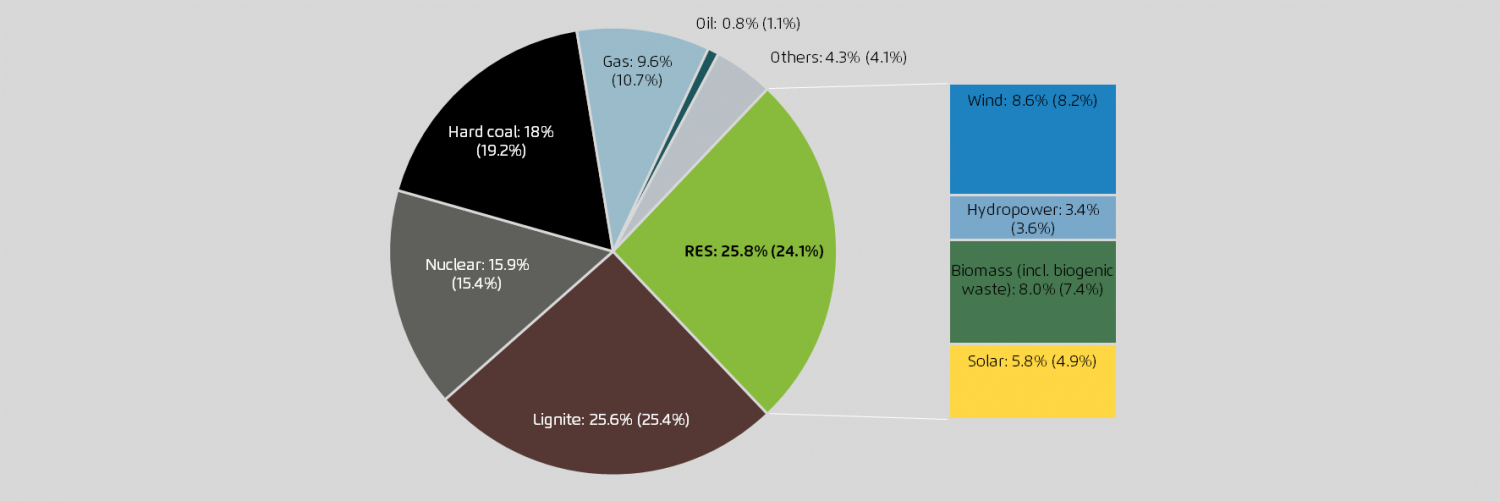

2014 may have marked an inflection point in the transition to clean, renewable energy in Germany, Europe's largest economy and the fifth largest in the world. Collectively, renewable energy resources supplied more electricity in Germany than any other category last year, surpassing lignite coal for the first time, according to Agora Energiewende's 2014 annual report.
Renewable energy resources, including wind, hydro, solar and biomass, accounted for 27.3 percent of German electricity generation in 2014, according to Agora's The Energiewende in the Power Sector: State of Affairs 2014. Significantly, greenhouse gas emissions and electric power consumption both declined, and wholesale power prices fell to a record-low while Germany's economy expanded 1.4 percent.
Commenting on the confluence of positive developments, Agora Energiewende Director Dr. Patrick Graichen said: “In 2013, we could still see an increase in the undesirable emission of carbon dioxide, parallel to the rise in renewables. At the time, we called this the Energiewende Paradox. Today we can say that this trend has been broken – energy from renewables continues to grow and greenhouse gas emissions are decreasing again.”
A turning point in Germany's renewable energy transition?
A tapering off in wind power production in October and November was followed by a record amount of wind power generation in December. Overall, a mild winter resulted in a low amount – 60-70 gigawatts – of power demand, Agora Energiewende highlights in its 2014 annual report.
A sunny summer led to lots in the way of solar energy production in Q3 2014, while both wind and solar power production levels were high in the spring second quarter. Renewable energy resources met 28.5 percent of Germany's overall electricity demand through the first half of 2014.
A troubling uptick in coal combustion, and hence carbon dioxide (CO2) emissions, had been recorded in recent years as Germany carried out the process of decommissioning its fleet of 22 nuclear power plants. Utilities opted to burn more hard and lignite coal to make up for the shortfall as opposed to natural gas, which is much more expensive in Germany.
That changed in 2014. Germany's annual greenhouse gas emissions fell substantially, to their second-lowest level since 1990, last year. Lower coal prices, and a mild winter, were the main contributors. Furthermore, Graichen of Agora Energiewende explains:
“The main reason for lower CO2 emissions, according to the analysis, is that after pushing gas-fired power plants out of the market, renewables are now crowding out climate-damaging hard-coal power plants. 'Hard coal and gas are the losers in the power mix. Lignite-fired power plants, on the other hand, are still producing at a high level."
Falling prices, falling greenhouse gas emissions and a growing economy
What's more, the upward trend in wholesale electricity prices also reversed course. Wholesale electricity prices on the Leipzig power market fell to a record-low 33 euros per megawatt-hour in 2014 as compared to 38 euros in 2013, according to Agora Energiewende's report.
Declining German power prices prompted its European neighbors to import more electricity from Germany, a record amount as it turns out. On a net basis, neighboring countries imported 34.1 terawatt-hours of German electrical energy – 5.6 percent of Germany's total electricity generation in 2014 -- which was a slight uptick from 2013.
“We appear to have reached the maximum possible in electricity exports,” Graichen commented.
Looking forward, Agora Energiewende foresees further declines in German electricity prices in 2015. Two factors will be the main drivers, Agora elaborates: “Forward contracts for 2015 purchases of electricity on the power exchange as well as the renewable energy surcharge are lower than in 2014. Many electricity distributors will pass these advantages on to their customers.”
Moreover, Agora points out, the number of hours where electricity prices were negative in Germany in 2014 increased to 64, “the same number as in 2013, although the share of wind and solar power had increased significantly.
“That this was successful is perhaps the best news for the power system,” Graichen said. “It shows that even a system with a lot of wind and solar power is technologically manageable.”
*Images credit: Agora Energiewende
Bananas, the Colombian Civil War and the U.S. Supreme Court

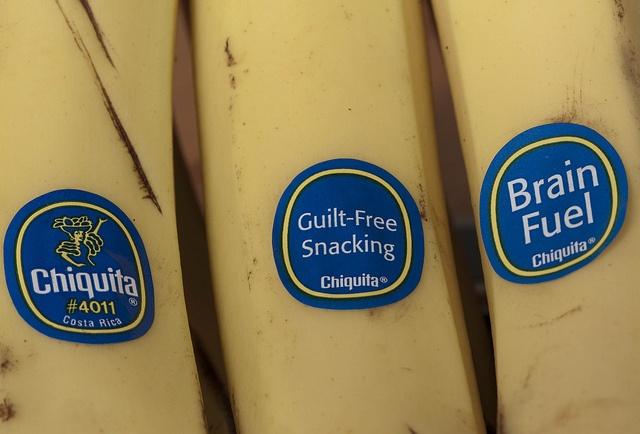
Last week, a group of Colombian plaintiffs asked the U.S. Supreme Court to revive their lawsuit against banana giant Chiquita. This case presents an opportunity for the Supreme Court to clarify its 2013 decision in Kiobel v. Royal Dutch Shell and give much needed guidance to plaintiffs and businesses regarding when a corporation may be liable under U.S. law for human rights abuses committed abroad.
Background on Colombia’s civil war
Colombia’s is the longest running civil war in the Western Hemisphere. The conflict stretches back some 50 years and has resulted in the deaths of nearly a quarter-million people -- mostly civilians. A recently-concluded government study estimates that nearly 5 million people have been displaced since 1996 alone, helping Colombia become the state with the second largest internally-displaced population in the world.
The civil war began in earnest in the early-1960s, when high levels of poverty and income inequality sparked an uprising by leftist guerrillas. In response, a network of paramilitary militias sprang up to protect landed interests. These groups were funded by a combination of drug money, U.S. government largesse and, as we will see, American corporate dollars.
In the late-1990s, the paramilitary network was formalized under an umbrella organization known as Autodefensas Unidas de Colombia (AUC) (United Self-Defense Forces of Colombia), which came to include more than 30,000 fighters by 2000.
The birth of the AUC sparked the bloodiest period of the war, marred by thousands of massacres mostly carried out by AUC forces. Over the course of a 10-year period, the AUC "waged a campaign of brutal violence," which included widespread forcible displacement, torture, and the murder of "thousands of campesinos, Afro-Colombians, indigenous persons, trade unionists, human rights advocates, religious leaders and other civilians."
The day before the attacks of Sept. 11, 2001, the U.S. State Department officially designated the AUC a "foreign terrorist organization" (a designation which was removed this past July).
Chiquita in Colombia
Banana behemoth, Chiquita Brands International, began operating in Colombia at the turn of the 20th century, where its history is colored as much by blood and moral compromise as it is by enormous profit. In 1928, for example, the Colombian military was summoned -- some say by the company -- to squash a month-long worker strike at Chiquita (then known as United Fruit Co.). The military opened fire on strikers assembled in the town square, killing somewhere between 47 and 2,000 people.
Roughly 70 years after the "banana massacre," Chiquita’s Colombian subsidiary, Banadex, began funding the AUC. The company allegedly stopped paying the AUC in 2004, a year after the company itself brought the fact of the payments to the attention of the U.S. Department of Justice (DOJ). (A Chiquita employee apparently learned of the AUC’s 2001 designation as a foreign terrorist organization and questioned whether it was a good idea to be funding it.)
Chiquita claimed that the payments it made to the AUC were extorted; yet, documents obtained in 2013 by George Washington University’s National Security Archive (the NSA Documents) demonstrate that Chiquita hired the AUC to provide security for its Banadex employees. A company memo from 2000, for example, admits that Colombian paramilitaries had formed a front company to disguise "the real purpose of providing security" to Banadex. The same memo contains the statement: “We should continue making the payments; we can’t get the same level of support from the military."
The Chiquita lawsuits
In March 2007, Chiquita and the U.S. DOJ struck a deal to end the government’s investigation. In exchange for paying a $25 million fine to the U.S. government and admitting to funding the AUC from 1997 to 2004, and the leftist FARC (Revolutionary Armed Forces of Colombia) and ELN (National Liberation Army) from about 1989 to 1997, the DOJ agreed not to prosecute Chiquita under anti-terrorism laws.
Four months later, family members of individuals killed by Colombian paramilitary groups in the 1990s and early 2000s filed suit against Chiquita under the Alien Tort Statute (ATS) in a district court in New Jersey. The plaintiffs argued that Chiquita’s payments made it complicit in extrajudicial killings, torture, forced disappearances, crimes against humanity and war crimes committed by Colombian paramilitary and rebel groups.
Other victims’ families later brought similar claims against Chiquita in other U.S. courts, all of which were consolidated in a 2008 multidistrict litigation (MDL) to be tried in Florida. By 2011, after even more claims were folded into the MDL, Chiquita stood accused in U.S. court of contributing to the killing of more than 4,000 Colombian nationals.
In a significant victory for the Colombian plaintiffs, the Florida district court in 2011 denied Chiquita’s motion to dismiss. Chiquita appealed and the 11th Circuit ultimately reversed. The circuit court held that, under the test set forth in the U.S. Supreme Court’s 2013 decision in Kiobel v. Royal Dutch Petroleum, plaintiffs had not alleged a sufficient connection between Chiquita’s actions and the territory of the United States. As such, American courts did not have jurisdiction to hear the claims.
The Supreme Court should use Chiquita to clarify the law
Last week, the Colombian plaintiffs asked the Supreme Court to reconsider the 11th Circuit’s dismissal of their case. The Supreme Court has discretion over which cases it accepts, and the Chiquita case presents the Court with a chance to clarify its ambiguous decision in Kiobel.
As I have explained here, here and here, the Supreme Court's Kiobel opinion was confusingly opaque and has primarily been used by lower courts to deny plaintiffs' access to justice for human rights abuses committed by American corporations abroad. In reversing the district court and tossing plaintiffs’ complaint against Chiquita, the 11th Circuit adopted a particularly extreme view of Kiobel and the (limited) scope of the ATS, stating simply: "The ATS does not apply extraterritorially."
The majority’s radical position prompted a strong dissent from Judge Beverly Martin, who pointed out that, although the murders all took place in Colombia, it was Chiquita’s conduct in the United States -- namely, "reviewing, approving and concealing a scheme of payments and weapons shipments to Colombian terrorist organizations" -- that formed the basis of its ATS liability. To Judge Martin, this was conduct that "touched and concerned" the territory of the U.S. with "sufficient force" to overcome the presumption against the territorial application of the ATS, as apparently required by Kiobel. As Marco Simons, legal director for EarthRights International (one of several counsel to the Colombian plaintiffs in Chiquita), put it: "It seems pretty straightforward that when a U.S. citizen – a human being or a corporation – finances terrorism, victims of that terrorist violence should be able to try to prove their case in U.S. courts."
Importantly, less than a month before the 11th Circuit’s Chiquita decision, the 4th Circuit held in Al Shimari v. CACI that this same type of conduct -- approval in the U.S. of conduct that violates international law abroad -- was sufficient to satisfy the Supreme Court’s Kiobel test. In reaching this conclusion, the 4th Circuit stated that it must "consider a broader range of facts than the location where the plaintiffs actually sustained their injuries" -- a proposition with which the 11th Circuit clearly disagreed in Chiquita.
In order to clarify its interpretation of federal law, the Supreme Court will often use disagreement within the country’s circuit courts (a so-called “circuit split”) as a basis for accepting a particular case. As Al Shimari and Chiquita make clear, there is fundamental disagreement among the circuits about how to apply Kiobel and when, if ever, a U.S. corporation can be liable for human rights abuses committed abroad. With any luck, the Supreme Court will agree and use the Chiquita case to provide some much needed guidance on this very important question.
Image credit: Flickr/Dawn Huczek
New York City Bans Foam Packaging


New York City is joining a slew of California cities that have banned foam packaging. Known as expanded polystyrene (EPS) foam, the formerly common packaging product can’t be used by food service establishments, stores and manufacturers on and after July 1, 2015. Polystyrene loose packaging also falls under the ban.
New York City’s Department of Sanitation (DSNY) determined that there is not a sufficient market for post-consumer EPS collected curbside, and therefore it was unable to accept it for recycling.
In December 2013, the New York City Council passed Local Law 142, which required the sanitation commissioner to determine if EPS foam could be recycled at the South Brooklyn Marine Terminal in a way that is “environmentally effective, economically feasible and safe for employees.” The DSNY collected about 28,500 tons of EPS in 2014 and an estimated 90 percent is from single-use food service products.
Businesses are being given time to ease into the restrictions. The law gives businesses a six-month grace period after the law goes into effect before fines will be imposed. Small businesses and nonprofit organizations with less than $500,000 in revenue a year can apply for hardship exemptions.
“These products cause real environmental harm and have no place in New York City. We have better options, better alternatives, and if more cities across the country follow our lead and institute similar bans, those alternatives will soon become more plentiful and will cost less,” said Mayor Bill de Blasio in a statement. “By removing nearly 30,000 tons of expanded polystyrene waste from our landfills, streets and waterways, today’s announcement is a major step towards our goal of a greener, greater New York City.”“While much of the waste we produce can be recycled or reused, polystyrene foam is not one of those materials,” said Sanitation Commissioner Kathryn Garcia. “Removing polystyrene from our waste stream is not only good for a greener, more sustainable New York, but also for the communities who are home to landfills receiving the city’s trash.”
EPS is a plastic resin that is made into foam articles such as packaging. The material is a notorious hazard to marine life, as EPS containers can break down into small pieces that marine animals may mistake for food.
Image credit: Peter Baldes
Embracing Natural Wisdom in a Volatile World

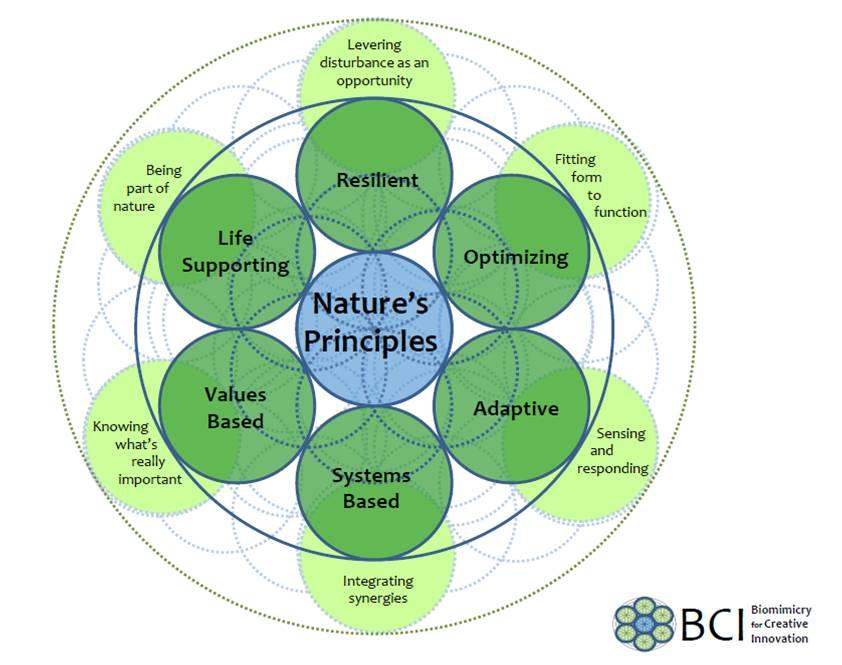
By Giles Hutchins
The transformational times in our midst demand that organizations redesign for resilience in order to flourish in the volatile times ahead.
The most important challenge facing leaders, strategists and operational managers in these times is a shift in logic from the outdated mindset of mechanistic, reductive, quantized, atomized, silo’ed, command-and-control thinking to a logic inspired by and in harmony with nature; this logic allows us to thrive during uncertainty by opening up to emerging futures through co-creativity, networking and reciprocity. Nature’s patterns, processes and inherent grammar display a universal wisdom that we’d do well to attune to.
We now know that life is neither innately selfish nor driven by dog-eat-dog competition. Nature is a rich interplay of reciprocity, networking, cooperation and competition. The evolutionary diversification of life is a dynamic process of co-creative influence, over vastly differing scales from microcosm to macrocosm.Whether it be at the places, products, processes, people or purpose dimensions within an organization, embracing nature’s wisdom helps organizations flourish in these volatile times. Let’s take a brief look at these organizational dimensions:
Places: There is a shift afoot from viewing the place of work as a static estate to viewing it as a healthy, vibrant place that adapts and responds to human nature and wider Nature. A design partner of Interface, David Oakley, notes: "Shape-shifting times call for inspired spaces that enable us to be connected yet distinct, like colors in a rainbow. Spaces that reflect our ability to adapt and bend and flex to meet today’s constant changes ensure our ability to survive and thrive."
Products: Product design inspired by nature is no longer niche, with a plethora of products across all sectors applying bio-inspired design from high-speed trains and airplane wing tips to mobile phone displays and smart-grid networks. As the late Steve Jobs said: "I think the biggest innovations of the 21st century will be at the intersection of biology and technology. A new era is beginning."
Processes: Not only is the design process of products transforming, but also the product lifecycle from raw material to recycling and reuse. Industrial ecology and closed-loop economics are nature-inspired approaches taken up by many leading sustainable businesses. What is also apparent is a shift afoot from product-orientation to service-orientation, where product-based approaches are being transformed into services, in-so-doing radically transforming the value-add provision and the stakeholder relationships from one-off to on-going. As Paul Hawken, Amory and Hunter Lovins noted a few years back, the shift to a service economy reverses "age-old assumptions about growth: an economy where we grow by using less and less, and become stronger by being leaner."
People: People are perhaps the most complex part of an organization. Business inspired by nature creates the conditions conducive to collaboration, adaptability, creativity, local attunement, multi-functionality and responsiveness; hence, enhancing the evolution of organizations from rigid, tightly managed hierarchies to dynamic living organizations that thrive and flourish within ever-changing business, socio-economic and environmental conditions. People are emancipated from top-down bureaucracy and KPI-obsessed management to co-create within emergent yet purposeful teams.
Purpose: While, on the surface, diverse, interconnected, emergent organizations may appear more chaotic and difficult to manage, they are vibrant places for people to become self-empowered – self-managing through mutual understanding of correct behaviors rooted in core values and clarity of purpose. It is this shared value set of core ethics that ensures self-empowered diversity naturally emerges towards delivering the value creation goals of the organisation, while maintaining flexibility, adaptability and sense of purpose.
True sustainability is being in harmony with nature by learning to participate as co-creators in the immense beauty of life. The more we open ourselves up to our inner nature, our local neighborhood and the wider world around us the more we attune with the wisdom in our midst. The diversity of our individuality is what makes for the richness and resilience of our collectivity. This communal, cultural and soulful wisdom is as relevant for politics, as it is for sustainable business, as it is for community regeneration.
In short, nature’s inspiration can help us re-align minds, hearts and souls. It helps us remember that we are expressions within a deeper matrix of Nature. The bright future of business lies in its scientific, sensuous and soulful understanding of Nature’s wisdom beyond the confines of yesterday’s divisive logic of dog-eat-dog competition and anthropocentric separateness. As Aristotle, Einstein, Da Vinci, Confucius and many other profound minds knew, to be in harmony with Nature is to embody the wisdom within and all around us beyond reductive, mechanistic logic, whereupon our left and right brain hemisphere’s and head and heart cohere. This is when we Homo sapiens live up to our name of wise beings.
For Triple Pundit readers, a special 20 percent discount code AF1014 when ordering The Illusion of Separation paperback here and the ebook here, it can also be found on Amazon.com
Here is a link to a short video of a talk Giles Hutchins gave in London recently.
For more on all this, join the facebook community https://www.facebook.com/businessinspiredbynature. Giles Hutchins tweets at @gileshutchins
Waste Management Tackles Landfill Diversion
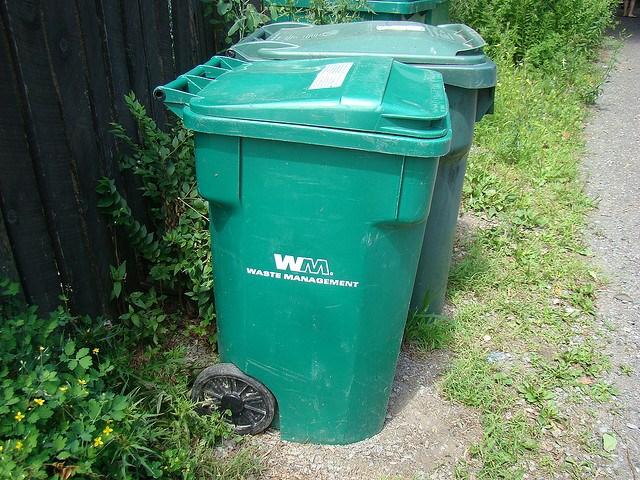

Waste Management is a company known for collecting trash. However, the company is making strides to reduce the amount of trash that ends up in landfills, as its 2014 sustainability report shows.
In 2013, WM took 15 million tons of recyclable materials from the waste stream, an 88 percent increase since 2007 and a 16 percent increase in the last two years. The company is well on its way to meet its goal of collecting 20 million tons of recyclable materials a year by 2020.
There are a variety of ways that WM is reducing waste sent to landfills. One of them is through mining: At many of its facilities, WM mines waste for cardboard and metal that can be recycled and resold. It began mining in 2011 by focusing on mining cardboard from its transfer stations. In 2013, WM focused on landfills and expanded the materials it mines. WM is mining materials at 117 of its transfer stations and 21 of its landfills.
Turning plastic into new products and energy
Plastic waste is a big problem in the U.S., where 47 million water bottles are used and thrown away every year. In 2010, WM invested in MicroGreen, a company that uses technology to turn plastics into new products. MicroGreen’s InCycle cups use up to 50 percent recycled content and are 100 percent recyclable. A lifecycle analysis by Franklin Associates found that InCycle technology requires the lowest amount of energy to create its products and produces the lowest amount of total solid waste.
WM has been developing technology to turn plastics into fuel using pyrolysis, which changes the chemical composition of organic material through exposure to high temperatures. Through pyrolysis, industrial and consumer plastics can be turned into a high octane synthetic crude oil. The crude oil is then turned into ultra-low sulfur diesel plus other transportation fuels and petroleum products.
WM’s first plastics recovery facility began its start-up phase in 2013 in Portland, Oregon. It is the largest commercially operational waste-to-plastic-to-synthetic crude oil facility in North America. It processed 848 tons of plastic into into 200,972 gallons of oil in 2013, which was delivered to a Tacoma, Washington oil refinery.
Reusing organic waste
There is much food waste and yard trimmings produced in the U.S. Combined, they make up about 28 percent of the U.S. waste stream. To reduce the amount of food waste and yard trimmings that ends up in landfills, WM created food waste collection services to over 700,000 residential and commercial customers. In 2013, WM diverted 2.4 million tons of food waste and yard trimmings from landfill to be used as compost, soil amendments and energy.
Most of the organic waste WM collects ends up in facilities that make marketable compost and soil amendment products. WM operated or was a partner with the operator of 39 organics processing facilities across the U.S. The company has also invested in several organic processors: In 2010, WM invested in Garick, a company that creates products such as compost and organic fertilizer.
Additionally, WM has invested in technologies to convert organic waste to energy, including its Centralized Organic Recycling equipment (CORe) process, which allows it to produce biogas for electricity and fuel. WM collects commercial food waste, screens it in one of its CORe facility to remove contaminants, and blends into bioslurry. That bioslurry is then delivered to municipal wastewater treatment plants, where it is anaerobically digested to increase the production of biogas. Adding only 7 percent organic material in the form of bioslurry to the plants' anaerobic digesters increases energy output by over 70 percent. The technology is still being piloted by WM, and there are projects in New York City and Los Angeles, with another one being developed in Boston.
Image credit: Neubie
Molson Coors signs up to waste packaging compliance scheme


Britain's biggest brewer, Molson Coors has signed up to the British Beer & Pub Association(BBPA) SUSTAIN waste packaging compliance scheme.
Joining the SUSTAIN scheme will reduce the cost for BBPA members of buying Packaging Recovery Notes (PRNs), as well as providing comprehensive support and industry-specific expertise. Under the new scheme launched in September 2014, brewers can achieve major cost savings, says the BBPA.
Also joining Molson Coors are Frederic Robinson, Harvey & Son, Joseph Holt, St Austell, JW Lees, Spirit, Enterprise Inns, and Daniel Thwaites. These companies join Charles Wells, Hook Norton, Black Sheep, Fuller's and Shepherd Neame, which were the first five members of the scheme.
Brigid Simmonds, BBPA chief executive and a director of SUSTAIN, commented: “This is a great start to 2015, and shows that the SUSTAIN partnership is making the business case to BBPA members as well as delivering for the environment, by reducing waste. We look forward to recruiting further new members.”
Picture credit: © Danieltaeger  | Dreamstime com  - Beer Bottle Necks Photo